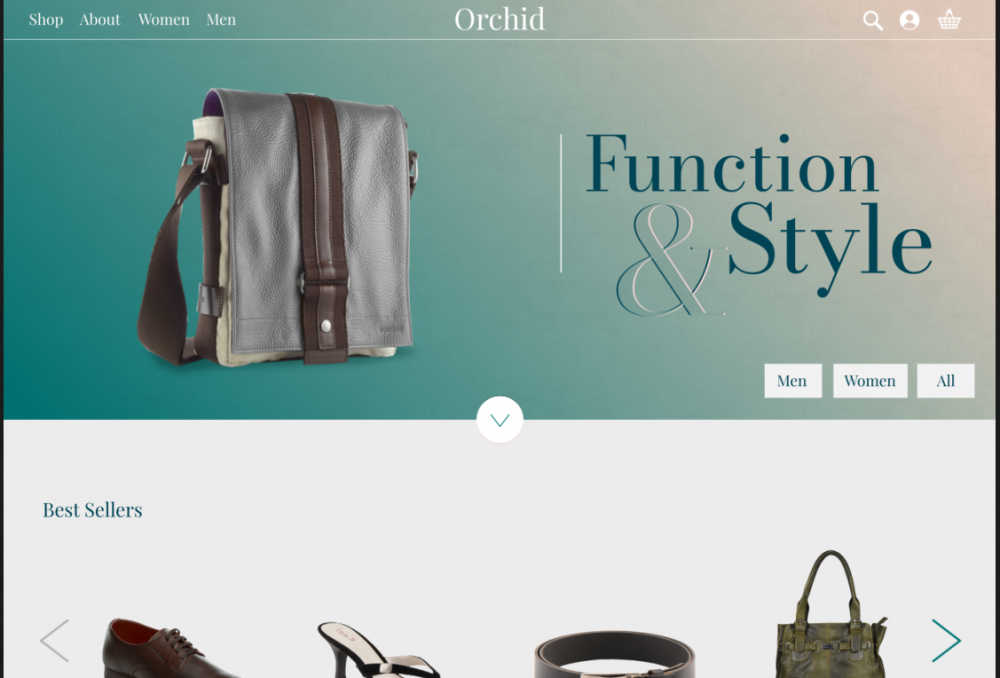-
Posts
30 -
Joined
-
Last visited
-
Days Won
5
jollyfrog last won the day on August 19 2021
jollyfrog had the most liked content!
Information
-
About Me
An illustrator for the love of it, a designer by character and a marketer by profession.
- Website
jollyfrog's Achievements
-
It appears, given the lack of response to the community invite to form a group, that there is no "community" interested in the theme. Unfortunately, it does not look possible to design a theme based on the suggestions of the community when the community will not come together to vote on ideas and settle on some fundamental goals of the theme. With this in mind, to end the endless discussion. I am officially dropping out. If in the future, a group forms who are willing to make timely suggestions, vote on them and support the development of a theme, drop me a message. For now, all the best.
-
To be honest, it wasn't that I had a dislike of anything. I explored TB on behalf of a client and realised that there wasn't a suitable theme available for their shop. I liked the idea of TB, regardless, and I like to contribute to decent open source projects if I can. I saw that certain members of the community were unhappy with the theme options available, and I have built themes in the past for various platforms. I am no expert with TB, which is why I requested the help of those who have the skills and experience to implement the theme, but perhaps don't have the design skills to do it alone. There has been a ton of discussion over the past 7 months and I took a back seat for a while, as there was too much confusion over what should or shouldn't be done regarding a theme. The reason I am still in the picture is this thread keeps being resurrected, and I am repeatedly asked if I am going to design something. I feel that if the right people are willing to support, I should complete what I started/offered. With that said, I have no personal agenda. I don't personally need a theme. As a merchant and a developer, you clearly have an in-depth understanding of the problems which other merchants face (better than I do). I know you were looking at building something with Tailwind and potentially starting from scratch with your own theme. If you feel that a new theme [design] is not the right solution, what would you suggest for other merchants? Would you suggest that Niara should be improved instead? Or do you feel that Niara is sufficient?
-
I have created a list of group members and added you to the list. Thank you.
-
@yaniv14 OK. Understood @cienislaw given the discussion over the last 7 months, I am inclined to agree with you. With that in mind, I think it is best to ask: Who would like to be involved in decisions/discussion relating to the new theme? (anyone is welcome — no coding or design skills required) In this group (looking at those who have commented on this thread and discussed the topic with me), I assume the following people would like to contribute suggestions? @veganline, @Mark, @Traumflug, @datakick, @cienislaw, @zen, @wakabayashi, @DRMasterChief, @yaniv14, @Wartin, @AndyC, @toplakd, @superbiche, @Briljander, @Mediacom87, @netamismb, @Billy Please make me aware if this is correct, or if you would like adding to or removing from the list. Once we have a group decided, all (fundamental) suggestions should be submitted within a given time frame (prior to any designs or code being written). I will do my best to document and summarise suggestions. I assume everyone is happy that any disagreements can then be settled by vote. Once the community has spoken, I will do my best to design the theme based on the community's wishes. (It is unlikely that the design will please everyone, but hopefully the majority will get what they need out of the theme). Is anyone available to support @yaniv14 in the near future, should he need it?
-
That is good news. How do you wish to proceed? Are you happy to move forward with Orchid (in the current style) as a basis for the overall design, or would you and/or those interested like to make suggestions regarding the design and function?
-
@yaniv14 Yes, I would if the community agreed that it was the best course of action. It is a substantial amount of work to waste if there isn't an organised team who want to implement it.
-
@Mark I wish I had more to offer. I could provide a design, but as for integrating it into thirtybees, I just don't have the skills. By the sounds of it, @wakabayashi needs another PHP dev more than he needs a graphic designer. If someone needs me, I still get the notifications.
-
Hi @Script-Fu, I started looking into the design of a new theme for thirtybees several months ago. Attached is part of a concept design called 'Orchid' (named after a beautiful, colourful bee found in Mexico). The difficulty lies in my reliance on others with the skill to implement the theme. My understanding is that the core team is very busy and cannot spare the time to focus on a new theme right now, and while others were kindly willing to get involved, the project lacked a decision maker. Many people, many ideas, but who should decide which route to take. If I had the skills and experience, I would gladly build the theme myself, but my coding ability doesn't stretch that far and my knowledge of thirtybees even less. On top of this, I understand that it is the view of the core team that a free theme should not be overshadowing the work of those who (do and could) develop (paid) themes for thirtybees as this may be off-putting to them and may hurt thirtybees in the long run, which makes sense. Perhaps the community could work on a paid theme... I don't know... I am currently working on other projects, but if, in the future, the right support is there, I'll gladly do my bit to help.
-
I should clarify, while I have not attempted to manipulate Apache server logs, NGINX provides the following useful information: IP address (to identify the user) Dates and times the server was accessed The URLs of the resources which were accessed Referring domains Response codes The user-agent (which provides clues as to who/how the site was accessed) I am aware, it is possible for NGINX to be configured to provide more data than this. While the raw data could appear near unreadable, the following data could be filtered: Number of visits over a given period Most popular pages/resources Average time on page Common entry and exit pages Whether the pages were accessed via other (internal) pages or accessed directly New users vs return users (both as a percentage and cumulative data) over a given time period Most popular pages by referring domain Overall traffic by referring domain ... To measure the data above, sensible assumptions must be made, such as "a session has ended once the user has not interacted for X mins/hours", and "the last page of the user journey does not count toward average time on page for any given page". Admittedly, the server logs do not track button clicks or measure marketing campaigns or goals, for this you would have to make assumptions based on continuous testing and correlative data (changes to sales of a given product prior to, during and after a campaign). Sales funnels would not be tracked automatically, but it is possible to track the journey of your visitors through the website. There would be no keyword data relating to search engines, but Google has moved away from keywords and now focuses on topics (grouped keywords) and user behaviour (you can rank No.1 for a phrase without mentioning it on your website). I agree that GA and Matamo provide more information and the information is more accessible. It was, therefore, irresponsible of me not to mention that there are other options. There is also Fathom, which I have tried, but the free (open source) version does not provide much depth of information, but could also be used for a quick overview/summary. To sum up: Measuring server logs manually is not going to be feasible for everyone and, while not everyone want's to use Google, Matamo may be a happy medium.
-
@Wartin Yes, you are right. People need to know the options and Matamo would certainly be useful for ecommerce sites. Unfortunatley, with clients, I almost always have to use GA and other insidious software. Server logs provide a wealth of information (not what I am sure Matamo can provide, but insightful) and are underestimated. The only issue is that the data is unfiltered. "like Neo reading the Matrix XD", indeed. Working with clients, I became increasingly frustrated at their obsessions with keyword stuffing, content rehashing and backlink purchasing, all based on their analytics. It became difficult to convince them to focus on long-term goals and good practices, such as a solid content strategy. On a relatively low-profile website, once content has gained pace and relationships with influencers have been established, the right post can deliver 10,000 to 20,000 visitors to the website in a few hours. Analytics usually cause website owners to look internally (rather than externally), it can be tempting to repeat what has worked, instead of exploring what could work better. Of course, you can see that my issues are mostly with how people interpret analytics rather than the analytics themselves. Progress isn't made with change alone, but by building on what you already have. I would, if I were running an ecommerce shop, want to gather more meaningful data than what I could get through server logs alone. Hence, I would like to know more about your experiences with Matamo. Also, do ad blockers affect Matamo in the same way as GA?
-
@datakick Apologies if I have misled anyone, that was not my intention. You are right, this does have very limited application. For ecommerce, people may desire/benefit from more information. I spend a lot of time dealing with other people's websites and it is too easy to neglect my own. Server logs provide me a quick overview of my websites' performance which can be useful to me. ---- The section in question has now been removed from the post.
-
You are right. The way I deal with the bots is to look for patterns and eliminate the associated IP addressses. Bots visit pages/links which regular visitors don't. They also, often, visit pages more quickly and visit far more pages than the average user. Hidden links can be placed on the site as a trap, and timeframes per page and number of pages visited can be measured. I also add to the block/bot list manually if one slips through and to eliminate my own IPs. These techniques aren't perfect, you may miss some (slow crawlers with ever changing ip addresses) and you may get some false positives, but it will likely be more accurate than GA in the long run as it won't be blocked by ad blockers. I run a single command which downloads the logs, checks for bots and gives me a basic analysis of the data (sorted bar charts for individual page views, total hits vs unique visits and top refering domains).
-
@movieseals In that case I will prepare something and share it soon. I am used to reading nginx logs, but I am aware most of the thirty bees sites are probably using Apache. That said, I am confident that this concept can translate. One question: Are you comfortable in the terminal? (I use tools like grep, sed and awk to achieve the result). Reading server logs has been very useful to me. So far, I read them regulary, but intermittently; but when I have time, I will automate the process.
-
5 Tips for Better Search and Sales Conversions Hopefully, some of you will find this useful. Not everything in this guide will be as easy to implement in thirty bees as others, but at the very least it should point those who are interested in the right direction. If anything is unclear please reach out. If enough people want to know more about any of the areas I have discussed below, I may create a more detailed post covering the subject. 1. Lighten the load (page load that is) Reduce external requests Say no to web fonts Most choose to avoid using system fonts and generic fonts, such as "sans-serif", for good reason — they can be unpredictable in headings (causing your layouts to fail) and make your site's design inconsistent across devices. However, the solution I see most site owners using is unnecessary and problematic. Web fonts solve one problem poorly and cause other issues. Not only does loading your fonts from another server cause slow rendering of the page content, your fonts may also load too late (the user sees your fallback font first). This contributes to a poor user experience. Google uses web fonts as a fallback for their analytics software — while there are many people blocking Google Analytics with ad blockers, few are blocking Google Web fonts. What's the alternative? Want a lightning fast page load? Serve your own fonts. This gives you the best of both worlds. Simply convert your [suitable] fonts (check the licence) to woff/woff2 and serve them directly with CSS. If anyone needs more information on this, let me know. Forget Font Awesome Font Awesome is convenient — to you, but not to your customers. Yes, that's another server to wait for before your page can render. Did you know SVGs are often tiny (in file size), and with [inline] SVG sprites you can load all of your graphics without a single request, and they can be cloned/partially cloned across your page? Now that is more awesome than Font Awesome! Better images guidelines The number one performance issue I see, which covers online businesses of all sizes, is poor use of images. Here are some best practices to solve slow loading pages and related poor conversions: Serve your own images (don't rely on CDNs and avoid hotlinking images) Standardise your image dimensions- Keep all images under 100kb Use srcsets in your code (where possible) to tell the browser which image to serve to which device. Your images should be high quality and consistent There are a number of open source programs to help you resize and optimise your images. If you are comfortable with the command line, I strongly recommend using imagemagick. If you want to know more about optimising images for the web and ways to automate the process, let me know. 2. Be minimal and functional Your customers likely care more about function than style. People are busy — they want to find what they are looking for, buy and leave. The best user experience on an e-commerce site is a fast one. For this reason: Make your design predictable and practical Your logo links to the home page Your contact page is in the main menu and/or details in the footer Your Returns Policy, Privacy Policy, Ts & Cs should be in the footer Your login button should be top-left Your logo, tagline and branding should make it clear what you do Create a sensible link architecture Link to your most popular products and pages in your footer Have two site maps. XML (for crawlers) and HTML (this one linked to in your footer) 3. Blend in — take advantage of familiarity Nothing says you are at the top of your game more than looking like you are at the top of your game. Don't try to be different for different's sake. Let familiarity be your friend. If you are new to the industry, research the leading sites in your industry and blend in. You should still have features that identify your brand and make you memorable, but too much personal expression and you will appear like the amateur in the industry. The world's leading websites don't have flashy designs; they are, for the most part, basic in style, predictable and easy to use. Ignore this rule only if the competition is poor and can easily and predictably be beaten. 4. Be better So how do you stand out? Focus on your offering! Are you the cheapest? Do you deliver faster? Are you the ethical choice? Perhaps you have products which others cannot source? If you don't know why your customers shouldn't buy from Amazon, neither do they. As a general rule, if you want to sell more products than your competitors, provide more product information. The more information, the more confident your customer will feel in both the product and your website. Also, this content WILL help you to rank higher on search engines. Create elaborate pages about the collections you sell Search intent is important to understand. This is possibly one of the most under utilised tools. People often look for information before they look to buy. That means your product page may not be what they are looking for. If you sell wood burning stoves, share information about the brands, which stoves in your store are most suited for small homes, which stoves are the most offer the most "bang for your buck". Display the appropriate products on the pages and link to your products, you are likely to qualify a sale which wasn't accessible to you before. Speak to manufacturers to see if you can gather more info on your products than your competitors. There are numerous creative techniques I have used to achieve high search rankings and boosted sales conversions. If you are interested to learn more, let me know. 5. Be useful Start creating content Create [or ask others to create] guides which may help your potential customers. Digital Ocean (not an affiliate) sell server space, but part of what pushed them ahead of their competition was their content. They pay people to create technical guides as a way of on-boarding new customers. What content would be useful to your potential customers? Add to the blog (at least) once per week If a visitor reads your post and returns in two weeks to see what else you have written only to find the same set of posts, they likely won't return. Attract qualified visitors by helping them and you will build a loyal customer base. If you want any advice on building a successful content strategy, let me know. 6. BONUS! The #1 Factor for Ranking on Google: ~~ Direct website visits ~~ Are customers recommending your website? Do your customers return? Do customers search for your brand name? As I'm sure you can see, the right offering and a winning user experience are vital! Regards, ——— jollyfrog ——— Graphic Designer & Digital/Content Strategist
-
I guess there is a necessary balance we must find between configurability and simplicity (for the merchant). For example, Panda (created by the same developers as Transformer) is a highly configurable theme, However, most of the shops I have seen using it are poorly constructed. Wix is also very adaptable, but it is mis-sold to business owners. In the ads they claim it is very easy to build a beautiful website. Yes, for a graphic designer! Also, contrary to popular opinion, beauty is overrated! I have worked in digital marketing for around 13 years (I manage a small agency) and one of the most common issues I have to solve is business owner [personal] expression. That is, altering things that didn't need altering. A theme needs to be robust, competitively designed and useful enough to the merchants so that too much tampering isn't tempting. UX is complex and simple in different ways. The layout and function of an e-commerce website should be as predictable as the layout of a brick and mortar shop. This leads to predictable sales conversions. Of course, with that said, I believe there should be some flexibility, as not all shops function in the same way; and what is predictable to one market may not make sense to another. For example, digital assets vs physical products. This theme doesn't need to compete with Panda or Transformer. This theme needs to compete with corporate sites in both search and sales. For the thirty bees merchants, these are the competition.









